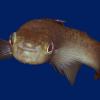Pennsylvania Bitter Cress.
(From www.illinoiswildflowers.info)
Cultivation: The preference is light shade to partial sun, wet to moist conditions, and soil containing loam or sandy loam with decaying organic matter. This plant develops quickly during the spring when the weather is cool and moist.
Range & Habitat: The native Pennsylvania Bitter Cress occurs occasionally in most areas of Illinois; it tends to be less common or absent in the NW corner of the state (see Distribution Map). Habitats include wet to mesic deciduous woodlands (especially floodplain and bottomland woodlands), swamps, shady seeps and springs, the bottom of cliffs, low ground near streams, and areas along woodland paths. Pennsylvania Bitter Cress is occasionally found in slow-moving water of seasonal ditches and shallow streams, where it resembles an emergent-aquatic plant. This plant is found in both higher quality habitats and disturbed areas where there is partial to light shade and the ground is more or less moist. It is sometimes found in sandy areas where decaying organic material is abundant.
Thanks for the responses! Probably won't survive I assume. I've got a pond I want to stock with submerged plants so I've got plenty more looking around to do.
Edited by strat guy, 18 March 2015 - 07:58 PM.
120 low tech native planted - Blackstriped Topminnow, Central Stoneroller, Fathead minnow, Golden Shiner, Black chin shiner, Carmine Shiner, Emerald Shiner, Sand Shiner, Spotfin Shiner, Orangethroat darter, Johnny Darter, and Banded Darter.
 IMG_0928.JPG 220.58KB
2 downloads
IMG_0928.JPG 220.58KB
2 downloads IMG_0929.JPG 193.26KB
2 downloads
IMG_0929.JPG 193.26KB
2 downloads







